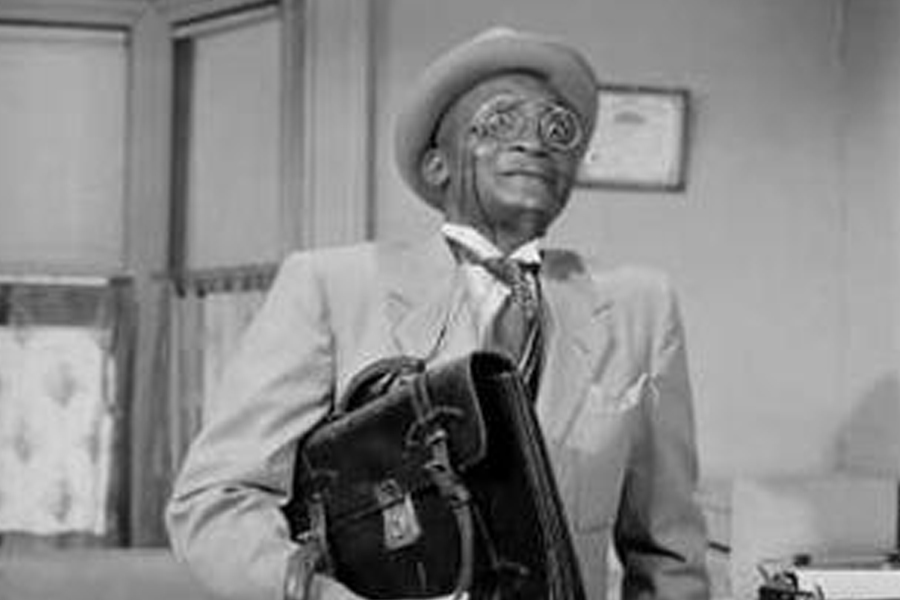Basic Information
| Field | Details |
|---|---|
| Full Name | Isabelle Margaret Swanigan |
| Name Variants | Margaret Swanigan; Isabel/Isabelle Swanigan; “Marge” in correspondence; occasionally styled as Margaret/Isabel Hairston after marriage |
| Known For | Spouse and partner of composer-actor Jester J. Hairston; presence in archival correspondence and biographical notes |
| Marital Status | Married to Jester J. Hairston (m. 1939) |
| Children | One daughter from a prior relationship; Jester Hairston became her stepfather in 1939 |
| Nationality | American |
| Public Profile | Private figure; appears in public records primarily in relation to Hairston’s life and career |
| Financial Details | Not publicly disclosed |
| Era of Public Mentions | Late 1930s–1980s |
A Name with Variations
Isabelle Margaret Swanigan moves through the public record like a quiet melody—present, resonant, yet often misheard. Her name appears in several forms: Margaret, Isabel, Isabelle, and simply “Marge” in personal correspondence. Such variation is characteristic of mid-20th-century recordkeeping, when archivists, editors, and family correspondents were less rigid about spellings than we are today. The variations do not suggest different people; rather, they sketch the outlines of a single private life touching a very public one.
These name shifts also reflect the contexts in which she appears. Formal program notes and institutional files lean toward “Margaret” or “Isabel,” while letters favor affectionate shorthand. After her 1939 marriage, references sometimes append her husband’s surname, subtly moving her from a stand-alone identity in the public eye to a family role woven into the narrative of an acclaimed artist.
Marriage to Jester J. Hairston (1939)
In 1939, Swanigan married Jester J. Hairston, a towering figure in American music and performance. Hairston (1901–2000) became a celebrated arranger and conductor of spirituals and an actor recognizable across stage and screen. Their marriage joined a thriving artistic career with a partner who preferred life offstage. Through the contours of concert tours, recording sessions, and film sets, Swanigan remained a steady presence—less a spotlight than a steady lamp at the doorway, illuminating home.
That year also marked an important family shift: Hairston became the stepfather to Swanigan’s daughter. Blended families were nothing new, but in the complicated logistics of an artist’s life, they required tact and care. The relationship is acknowledged in archival and biographical notes, which consistently emphasize that stepfatherhood was part of Hairston’s life story from 1939 onward.
Family Ties: A Blended Home
Public descriptions of Swanigan’s family are sparse, but a few threads hold steady. She had a daughter prior to marriage; after 1939, Hairston served as stepfather. The daughter’s name appears with variant spellings in public records—often rendered as Jeanne-Marie—an echo of the broader name-variation pattern that surrounds the family. This is not unusual when dealing with older archival documents, typed letters, and cross-indexed biographical notes compiled at different times by different hands.
What emerges is a picture of a family anchored by private routines and strengthened by the quiet resilience that supports a public career. One can imagine calendars marked by choral rehearsals and film calls, balanced against school terms, holidays, and the ordinary cadences of home life. In that sense, Swanigan’s life speaks to a gentle paradox: being central to a story without being the subject of it.
Life Lived Offstage
No standalone public career for Swanigan dominates the record. Her name rises in correspondence, family mentions, and institutional descriptions of her husband’s work. That is not absence; it is a choice. Many families of public figures prefer a low profile, trading headlines for privacy. Her footprint is the measured step of someone content to let the music speak for itself.
Even so, the occasional detail slips through. Letters from the early 1960s refer to “Marge,” a tone only slightly less formal than “Margaret” but warmer by a degree. The intimacy of a nickname hints at a social circle, dinners after concerts, notes left on dressing tables. To reconstruct her daily life would be speculation; to sense her presence, however, requires only a close look at how often she is acknowledged within the larger narrative.
Mini-Timeline: Markers in the Record
| Year | Event |
|---|---|
| 1939 | Marriage of Isabelle Margaret Swanigan and Jester J. Hairston; Hairston becomes stepfather to her daughter |
| 1950s–1960s | Correspondence and professional materials refer to “Margaret,” “Marge,” and similar variants in family and professional contexts |
| 1980s | Later-life references to the couple appear in retrospective notes and biographical summaries |
| 2000 | Death of Jester J. Hairston; retrospectives frequently acknowledge his marriage to Margaret/Isabel and his role as stepfather |
This timeline is a skeleton of public mentions—serviceable, if spare. What matters is the continuity: her presence noted at the beginning of a marriage, mentioned during the height of a career, and remembered in summations that look back across decades.
Immediate Family Overview
| Relation | Name | Notes |
|---|---|---|
| Husband | Jester J. Hairston (1901–2000) | Composer, arranger, choral conductor, and actor; married Swanigan in 1939 |
| Stepchild | Jeanne-Marie (name variants reported) | Daughter from Swanigan’s prior relationship; Hairston became stepfather in 1939 |
The table is simple by design, reflecting what can be publicly and responsibly stated. The family’s deeper private history—parents, siblings, extended relations—does not appear in well-documented public records, a limit that should be respected.
Why She Matters
The scaffolding of an artist’s life is rarely visible from the street. Yet without it, the edifice cannot stand. Swanigan represents that crucial, often invisible architecture: a partner whose steadiness allowed a demanding, public-facing career to flourish. In this way, she resembles the low hum beneath a choir—unheard individually, essential collectively. Her importance is measured in continuity rather than headlines, in endurance rather than applause.
Her story also reminds us how the historical record privileges certain kinds of documentation. Programs list performers; contracts name principals; headlines chase fame. Family life persists in the margins—nicknames, notes, acknowledgments. To reconstruct a life like Swanigan’s is to read the margins closely, to honor the quiet labor of caregiving, planning, and presence.
Research Notes and Caution
Several recurring issues appear when discussing Swanigan. First, names vary. Readers may encounter “Margaret,” “Isabel,” “Isabelle,” and affectionate forms such as “Marge.” Second, public mentions focus more on Jester Hairston’s prolific career than on Swanigan’s personal biography. Third, details such as birth information, parents’ names, and finances are not reliably published in accessible records. In practice, this means acknowledging uncertainty, avoiding overreach, and distinguishing between well-attested facts and the temptations of conjecture.
None of this diminishes her significance. Instead, it challenges us to appreciate how personal histories—especially those adjacent to great public careers—can be both vital and discreet. In the wide symphony of 20th-century American music and film, Isabelle Margaret Swanigan provided a steady tempo that helped keep the performance whole.
FAQ
Who was Isabelle Margaret Swanigan?
A private American figure best known as the wife of composer-actor Jester J. Hairston, she appears primarily in family and archival references.
When did she marry Jester J. Hairston?
They married in 1939.
Did she have children?
Yes, she had a daughter from a prior relationship; Hairston became the child’s stepfather after their 1939 marriage.
Why does her name appear with different spellings?
Mid-20th-century recordkeeping and informal correspondence commonly used variants such as Margaret, Isabel/Isabelle, and “Marge.”
Is the stepchild’s name known?
The daughter’s name appears with variant spellings in public mentions, often rendered as Jeanne-Marie.
What is known about her career?
No independent public career is prominently documented; she maintained a private life alongside her husband’s public work.
Are her birth and death details publicly verified?
Comprehensive, authoritative details are not widely available in public records, and many references focus on her role in Hairston’s life.
What do we know about her finances or net worth?
There is no credible public disclosure of her personal financial details.
How is she typically referenced in historical materials?
She is frequently named in biographical notes about Hairston and in correspondence where she is sometimes called “Marge.”
Why is she significant despite limited public detail?
Her story illustrates the essential, often unseen support that sustains major artistic careers, adding depth and humanity to the historical record.



